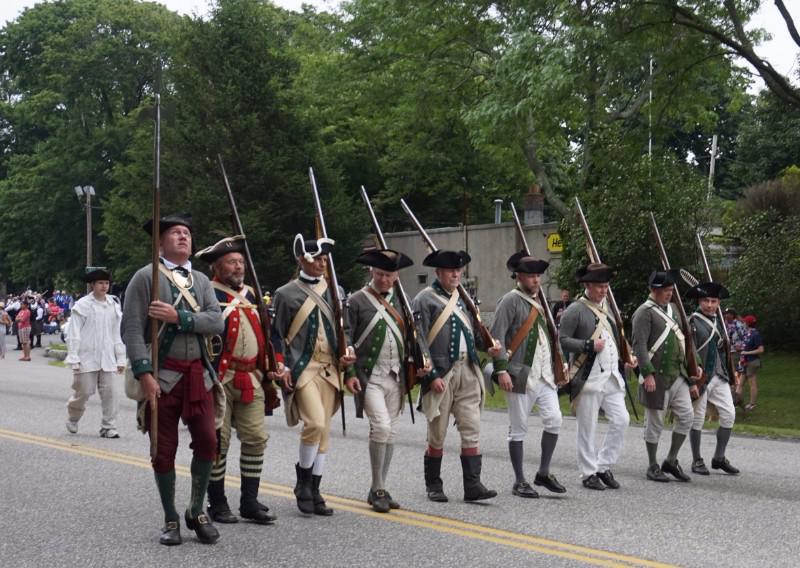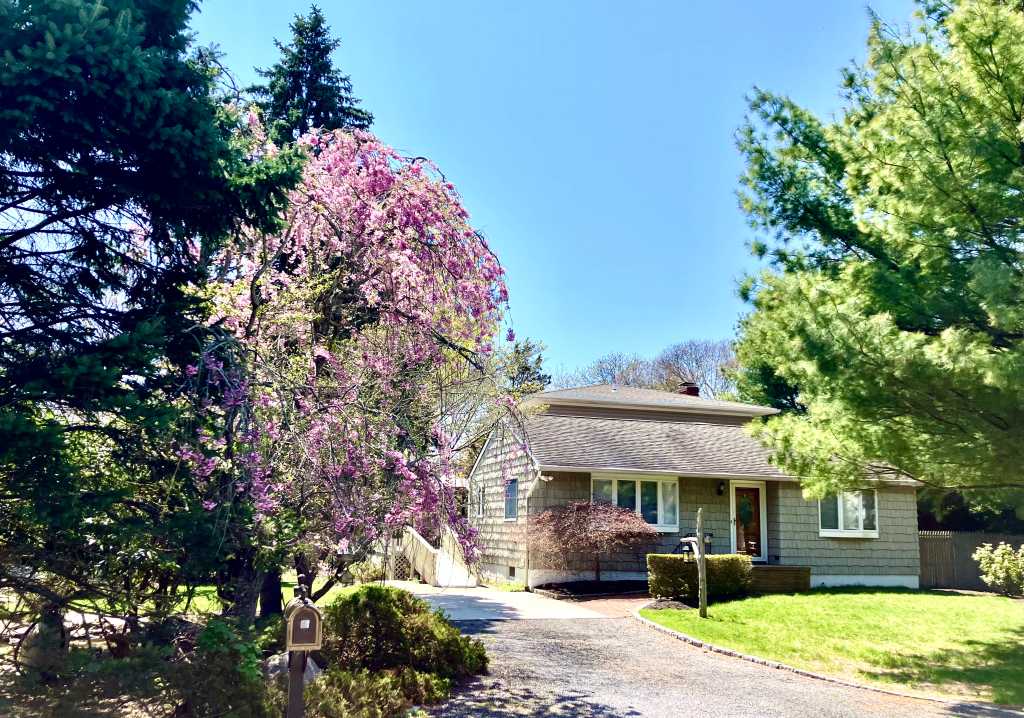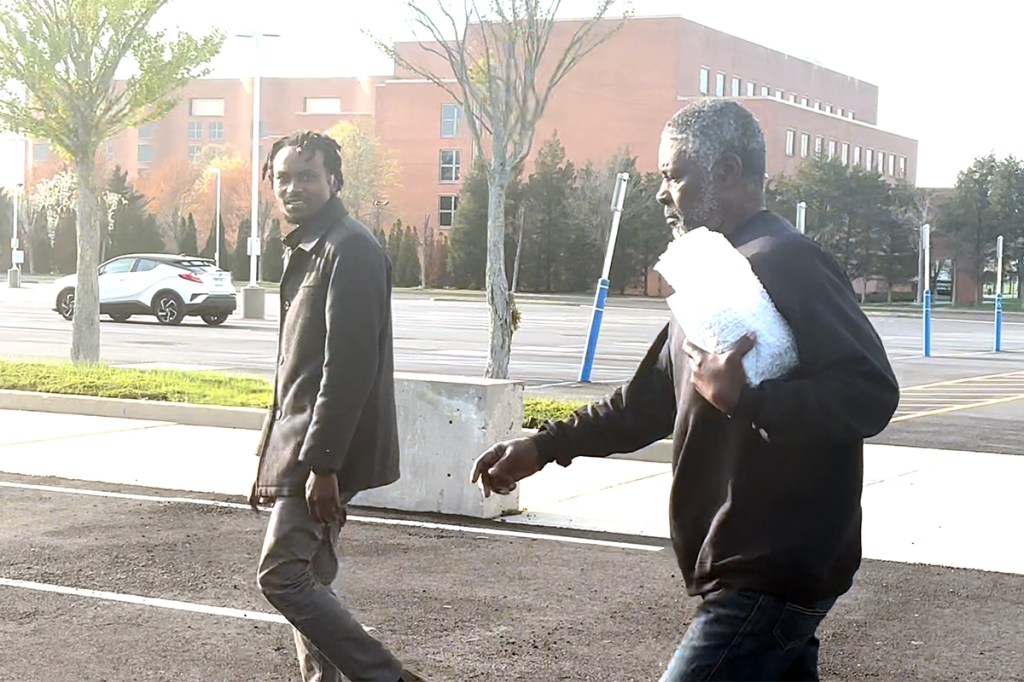Reenactments and Gun Laws – Rules Changed, Events Canceled

Many of the villages out here on the East End date their founding back to the 1600s. Their first settlers gave their allegiance to the king of England, did their transactions in pence and shillings and were happy that, since they were so few, they were backed up by a thriving European empire.
As we all know, it didn’t last. And beginning in 1776, the settlers here joined with others and eventually prevailed to found the United States of America.
Yes, there were several battles out here during that war. And on occasion, reenactments of them have taken place where some local residents dress up as Redcoats and others dress up as militiamen, and usually on the anniversary of when these battles have taken place, have it out with muskets shooting, cannons thundering and swords clashing. All in fun, of course. Nobody gets injured or anything. But the public, sometimes heeding to a warning, stays off the streets for a few hours while these folks have it out.
The last time a reenactment took place that I can recall was in 2008. I remember one night visiting a weekend encampment of the Bridgehampton Militia, played by members of the Huntington Militia, (yes, there is today such an organization) which set up camp at Mulford Farm in East Hampton. They were preparing for the battle, which originally took place in downtown Sag Harbor in 1813, but would now be reenacted on the upcoming Saturday night and Sunday morning.

This past June, however, and then again in September, gun laws in the state of New York were modified, getting struck down by the Supreme Court in that earlier month, and then voted back in with some changes in September by Albany to give the courts another group of powerful state laws to chew on. And this has resulted in the cancellations of some scheduled battle reenactments around the state. It’s the strangest thing.
The law struck down by the Supreme Court in June required that people in New York State who wish to carry a concealed gun outside of their home must prove proper cause. If you did not have a reason, you could not conceal carry.
The problem with the reenactments came about when, in September, lawmakers in Albany passed a replacement law that took another approach. Yes, a person could have a concealed carry. But they were not to be permitted in parks, government buildings, libraries, museums and a whole list of other places.
As a result of this, several scheduled reenactments, nearly all scheduled to take place in upstate New York, were canceled.
One was to take place on Rogers Island in Saratoga Springs.
“We’ve been getting reports from units that were supposed to attend that they don’t feel comfortable transporting or bringing muskets to the site,” re-enactor Harold Nicholson said, according to the Associated Press. “And so at that point, we decided that it was probably best not to go ahead.”
Another battle canceled over the last several months was the scheduled reenactment of a 1777 Revolutionary War raid at the Fort Klock historic site in the Mohawk Valley.

“The reason why we canceled it was for fear of exposing the people we invited to the event to prosecution for committing a felony,” Robert Metzger, the chairman of the board of Fort Klock Historic Restoration told the AP. He also said they canceled for fear of losing their state charter. Also, he said, some Canadian reenactors called to say they would not be coming down for the event. (They would have been Redcoats.)
There are really only two revolutionary events that can be reenacted on the East End. One of them took place in December 1777 involving Southold and Sag Harbor. The other occurred in 1813, not in the Revolutionary War but during the War of 1812. Both were battles with British Redcoats. The 1813 battle took place in much of downtown Sag Harbor.
In 1777, after the British defeated the Americans in the Battle of Long Island at Brooklyn in 1776, sending our army off to a winter encampment at Valley Forge, Pennsylvania, all of Long Island came under British occupation. Most residents of Long Island had to sign pledges of loyalty to the king. And those who would not do so, to avoid imprisonment, fled by boat across Long Island Sound to Connecticut, where the rebels still held control.
In Connecticut, a group of about 240 rebels, mostly displaced Long Islanders, put together a scheme to raid a British encampment on Long Wharf in Sag Harbor. On the night of May 27, 1777, this group, headed up by Colonel Return Jonathan Meigs Sr., rowed whaleboats across Long Island Sound carried their boats across the strip of land at Southold separating the Sound from Peconic Bay, re-launched their boats and rowed further south to come ashore at 2 a.m. at Noyac, four miles west of town. Armed with muskets, they walked the four miles to Long Wharf, fired shots at the Redcoats’ encampment, demanded their surrender, and so took 90 of them back as prisoners to Connecticut the way they came. Before leaving, they burned all the supplies the British had stored at Long Wharf. There were no American casualties; six British soldiers were killed and 12 small boats sunk.
In the War of 1812, the British were stopping American ships at sea and impressing — kidnapping might be a better term — their American crews into the British Navy, saying these people were English. The Americans declared war. And in response, the British sent Men O’ War to bombard, then land and set fire to port towns up and down the east coasts of America. In the summer of 1813, 100 Redcoats landed at Long Wharf, Sag Harbor, and proceeded to burn down the town, but then found themselves under rebel fire from a cannons set up atop nearby Turkey Hill. This fire, together with attacks by other militiamen stationed on the beaches nearby, drove the British off. And Sag Harbor survived. And thrived.
Albany says they intend to revise the new law against guns in parks. Presumably it will specifically list Revolutionary War muskets and cannons as exempt.



